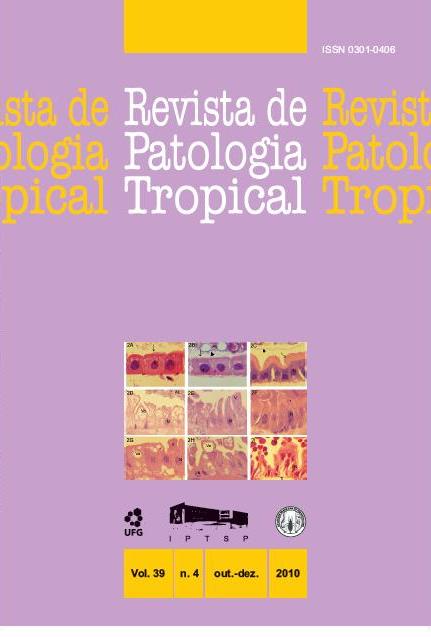Bacilloscopy for pulmonary tuberculosis. Multicenter study of bacilloscopy sputum smears in the diagnosis of pulmonary tuberculosis according to the World Health Organization and Brazilian Ministry of Health
DOI:
https://doi.org/10.5216/rpt.v39i4.13062Keywords:
Diagnosis, Tuberculosis, Health Services, World Health Organization.Abstract
In the diagnosis of pulmonary tuberculosis, sputum bacilloscopy was standardizedby the WHO for slide preparation, staining, and reading the smear. The Brazilian
Ministry of Health adopted this standardization for staining and reading, but
the smear was extended to 2/3 of the slide, different to the elliptical format
recommended by the WHO. This study aimed at comparing the two smear
techniques by evaluating the sensitivity and specificity, preparation and reading
times, and biosafety issues. Eight regional laboratories of the Adolfo Lutz Institute
participated. Over three months, slides were prepared for 356 sputum samples
using the two techniques. Reading of slides employed semi-quantitative counts
using bacilloscopy index scale as recommended by the WHO and Brazilian
Ministry of Health. The sensitivity of the elliptical smear was 97.0%, specificity
97.5%, accuracy 97.2%, and error 2.8%. Agreement of classification according
to the scale was: 80.7% for rare BAAR, 83.7% for 1+, 89.8% for 2+, 90.9% for
3+ and 97.5% for negative cases (Kappa=0.87 p<0.001). Preparing (p=0.03) and
reading (p=0.01) the smear were faster by the WHO method and better in relation
to biosafety. This study demonstrated the viability of adopting the smear technique
standardized throughout the world by the WHO.
Downloads
Downloads
Published
How to Cite
Issue
Section
License
The manuscript submission must be accompanied by a letter signed by all authors stating the full name and email address, confirming that the material has not been published or is under consideration for publication elsewhere, and agreeing to transfer copyright in all media and formats for Journal of Tropical Pathology. The authors will not be paid for published articles. They are solely responsible for the content of those articles, even if the Editor holds the right to adjust them to the norms of the journal.
The reviewers will not be paid for the peer review process.

